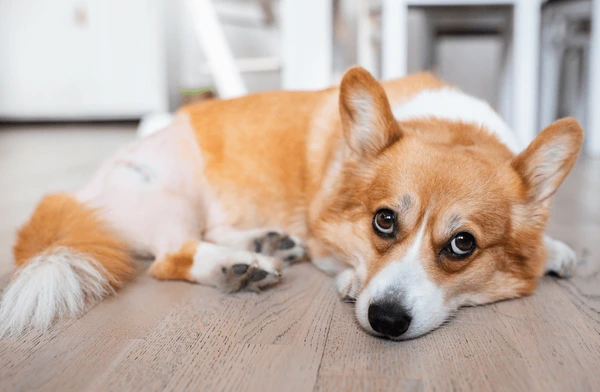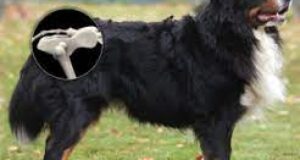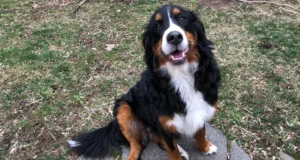Imagine a loyal old dog, once the embodiment of energy, now struggling with each step like a seasoned sailor battling rough tides. Canine Hip Dysplasia (CHD) is not just a medical condition; it is a silent thief that robs our beloved companions of their mobility, joy, and dignity. The journey toward dog hip replacement is like crossing a rickety bridge—fraught with risks but leading to a hopeful horizon.
1. The Dilemma: To Operate or Not?
The decision to opt for dog hip replacement is akin to a knight standing at a fork in the road—one path leads to possible salvation, while the other risks prolonged suffering. Owners often wrestle with financial strain, post-surgical risks, and emotional distress, much like a parent deciding on a critical surgery for a child.
Common Concerns:
- The High Cost: The surgery is often as expensive as a rare gem, making it inaccessible for many.
- Surgical Risks: Just as a blacksmith must carefully forge a blade, the success of the surgery depends on precision and expertise.
- Post-Surgery Pain: The recovery phase can feel like a long winter before the warmth of spring.

2. The Surgery: A Leap of Faith
Under the surgeon’s skilled hands, the old, aching joint is replaced with a new one—an act much like restoring an ancient, timeworn castle brick by brick. But not every dog responds the same way. Some regain their youth like a phoenix rising from the ashes, while others struggle like a fledgling bird learning to fly again.
Challenges During Surgery:
- Anesthesia risks, especially in older dogs, can be like rolling dice in a high-stakes game.
- Implant rejection, though rare, can turn hope into despair, much like a ship encountering an unexpected storm.

3. Recovery: A Test of Patience and Care
After the storm comes the calm—or does it? The post-surgical phase is where true endurance is tested. Dogs must relearn to walk, like a sculptor carefully chiseling a masterpiece from rough stone. The pain, swelling, and risk of complications require an owner’s commitment akin to tending a fragile seedling, watering it with patience and love.
Key Recovery Aspects:
- Physical Therapy: Without it, the new hip is like an unused musical instrument, capable but silent.
- Pain Management: The discomfort can be as persistent as a shadow, requiring medications and care.
- Emotional Support: A dog, much like a weary traveler, needs reassurance and encouragement.
When successful, dog hip replacement can turn a limping soul into a lively spirit, much like the first sunrise after a long night. The dog that once dragged its feet like a weary warrior can now run like a playful pup chasing butterflies. The reward? A renewed life, free from pain, proving that sometimes, taking the leap of faith is worth the risk.
A dog’s unwavering love deserves an equally steadfast commitment. While hip dysplasia surgery and dog hip replacement are not without their trials and tribulations, they remain a beacon of hope—a bridge that, when carefully crossed, leads to a land where pain is but a forgotten memory.
Would you take your companion’s paw and walk that bridge?
Imagine a loyal old dog, once the embodiment of energy, now struggling with each step like a seasoned sailor battling rough tides. Canine Hip Dysplasia (CHD) is not just a medical condition; it is a silent thief that robs our beloved companions of their mobility, joy, and dignity. The journey toward hip replacement is like crossing a rickety bridge—fraught with risks but leading to a hopeful horizon.
1. The Dilemma: To Operate or Not?
The decision to opt for hip replacement is akin to a knight standing at a fork in the road—one path leads to possible salvation, while the other risks prolonged suffering. Owners often wrestle with financial strain, post-surgical risks, and emotional distress, much like a parent deciding on a critical surgery for a child.
Common Concerns:
- The High Cost: The surgery is often as expensive as a rare gem, making it inaccessible for many.
- Surgical Risks: Just as a blacksmith must carefully forge a blade, the success of the surgery depends on precision and expertise.
- Post-Surgery Pain: The recovery phase can feel like a long winter before the warmth of spring.
2. The Surgery: A Leap of Faith
Under the surgeon’s skilled hands, the old, aching joint is replaced with a new one—an act much like restoring an ancient, timeworn castle brick by brick. But not every dog responds the same way. Some regain their youth like a phoenix rising from the ashes, while others struggle like a fledgling bird learning to fly again.
Challenges During Surgery:
- Anesthesia risks, especially in older dogs, can be like rolling dice in a high-stakes game.
- Implant rejection, though rare, can turn hope into despair, much like a ship encountering an unexpected storm.
3. Recovery: A Test of Patience and Care
After the storm comes the calm—or does it? The post-surgical phase is where true endurance is tested. Dogs must relearn to walk, like a sculptor carefully chiseling a masterpiece from rough stone. The pain, swelling, and risk of complications require an owner’s commitment akin to tending a fragile seedling, watering it with patience and love.
Key Recovery Aspects:
- Physical Therapy: Without it, the new hip is like an unused musical instrument, capable but silent.
- Pain Management: The discomfort can be as persistent as a shadow, requiring medications and care.
- Emotional Support: A dog, much like a weary traveler, needs reassurance and encouragement.
4. The Light at the End of the Tunnel
When successful, hip replacement can turn a limping soul into a lively spirit, much like the first sunrise after a long night. The dog that once dragged its feet like a weary warrior can now run like a playful pup chasing butterflies. The reward? A renewed life, free from pain, proving that sometimes, taking the leap of faith is worth the risk.
A dog’s unwavering love deserves an equally steadfast commitment. While hip dysplasia surgery is not without its trials and tribulations, it remains a beacon of hope—a bridge that, when carefully crossed, leads to a land where pain is but a forgotten memory.
Would you take your companion’s paw and walk that bridge?




